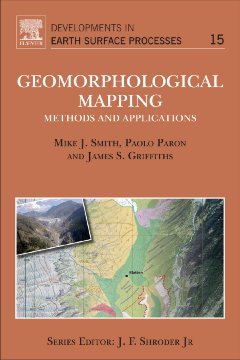
Additional Information
Book Details
Abstract
Geomorphological Mapping: a professional handbook of techniques and applications is a new book targeted at academics and practitioners who use, or wish to utilise, geomorphological mapping within their work. Synthesising for the first time an historical perspective to geomorphological mapping, field based and digital tools and techniques for mapping and an extensive array of case studies from academics and professionals active in the area. Those active in geomorphology, engineering geology, reinsurance, Environmental Impact Assessors, and allied areas, will find the text of immense value.
- Growth of interest in geomorphological mapping and currently no texts comprehensively cover this topic
- Extensive case studies that will appeal to professionals, academics and students (with extensive use of diagrams, potentially colour plates)
- Brings together material on digital mapping (GIS and remote sensing), cartography and data sources with a focus on modern technologies (including GIS, remote sensing and digital terrain analysis)
- Provides readers with summaries of current advances in methodological/technical aspects
- Accompanied by electronic resources for digital mapping
"Geomorphological Mapping: Methods and Applications is a practical textbook that is essential reading to students and professional practitioners wishing to embark on a geomorphological project in any discipline. It is the first book of its kind, in that it brings together many topics that are normally dealt with and taught separately. These include the practicalities of completing field mapping, through to data sources and how to interrogate them and process them in a GIS. The diagrams and maps provided as examples are of a high standard. It is easily read and logically arranged, with clear co-operation between the editors and contributors."--Quaternary Science Reviews "This text explains the concepts, characteristics, makers and users of, and trends in, how modern geomorphological mapping can be applied to solve complex problems in land management, including landslide risk assessment, resource location, and changes in landforms. Following a historical overview of trends in field-based geomorphological mapping, Smith (geography, geology, and the environment, Kingston U., UK) and colleagues in the UK and the Netherlands present new digital tools and techniques, e.g., remote sensing, WebGIS, that have resulted in the use of 'non-subjective' mapping in applied research that now informs cartography, geographic information systems, and terrain analysis. The handbook includes international case studies illustrated with diagrams and color plates that exemplify the diverse applications, current limitations and potential of this methodology."--Reference and Research Book News, October 2012
